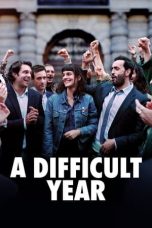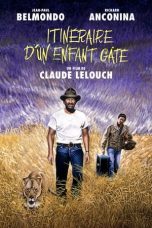- Source: Albert von Le Coq
Albert von Le Coq (German pronunciation: [ˈalbɛʁt fɔn lə ˈkɔk]; 8 September 1860 in Berlin, Prussia – 21 April 1930 in Berlin, Weimar Republic) was a Prussian/German brewery owner and wine merchant, who at the age of 40 began to study archaeology.
Background
He was born at Berlin, of a family of French Huguenot origin, as evidenced in his family name.
Von Le Coq was heir to a sizable fortune derived from breweries and wineries scattered throughout Central and Eastern Europe, thus allowing him the luxury of travel and study at his leisure. The business he owned survives today as the A. Le Coq brewery in Tartu, Estonia.
Career as archaeologist
Aided by his wealth, von Le Coq became a famous archaeologist and explorer of Central Asia.
Von Le Coq was convinced that the influence of Ancient Greece could be found as far in the east as China. However, organising expeditions to Central Asia and China was beyond his means. The German archaeologist Hermann Parzinger has found a letter in the Prussian State Archive which reveals that the financial backing to von Le Coq's expedition came from no one else than the last German emperor Wilhelm II. Wilhelm was obsessed with Greek culture and supported one of the expeditions with 32,000 German gold marks.
Von Le Coq was associated with the Museum für Völkerkunde (now called the Ethnological Museum of Berlin) in Berlin. Serving as assistant to the head of the museum, Professor Albert Grünwedel, Le Coq helped plan and organize expeditions into the regions of western Asia, specifically areas near the Silk Road such as Gaochang. When Grünwedel fell ill before the departure of the second expedition, Le Coq was assigned to lead it. His account of the second and third German Turpan expeditions was published in English in 1928 as Buried Treasures of Chinese Turkestan.
The expeditions found extensive networks of Buddhist and Manichaean cave temples in the Xinjiang region of Northwest China. Although many of the manuscripts found in the cave were destroyed during the excavation, von Le Coq speculated that he had discovered a major Manichaean library. Some of the paintings also led him to believe that he had found evidence of an Aryan culture, related to the Franks.
Le Coq said that the depictions of figures with apparently blue eyes, red hair and cruciform swords resembled Frankish art: "Such more striking are representations of red-haired, blue-eyed men with faces of a pronounced European type. We connect these people with the Aryan language found in these parts in so many manuscripts.. These red haired people wear suspenders from their belts.. a remarkable ethnological peculiarity!"
With the help of Theodor Bartus and his other assistants, Le Coq carved and sawed away over 360 kilograms (or 305 cases) of artifacts, wall-carvings, and precious icons, which were subsequently shipped to the museum. In Buried Treasures ..., Le Coq defends these "borrowings" as a matter of necessity, citing the turbulent nature of Chinese Turkestan at the time of the expeditions. Chinese consider this seizure a "colonial rapacity" comparable to the taking of the Elgin Marbles or the Koh-i-Noor diamond. The collections from the German expeditions were initially kept at the Indian Department of the Ethnological Museum of Berlin (Ethnologisches Museum Berlin). The artifacts were put on display at the museum and were open to the public until 1944 when the relics were destroyed in British bombing raids during World War II. The Ethnological Museum was bombed seven times in Allied bombing raids, destroying the larger wall murals which had been cemented into place and could not be moved; 28 of the finest paintings were totally destroyed. Smaller pieces were hidden in bunkers and coal mines at the outbreak of war and survived the bombings. When the Russians arrived in 1945 they looted at least 10 crates of treasures that they discovered in a bunker under the Berlin Zoo which have not been seen since. The remaining items have been collected together and are housed in a new museum in Dahlem, a suburb of Berlin, the Museum of Indian Art (Museum für Indische Kunst) from 1963 and finally combined into a single location at the Berlin-Brandenburg Academy of Sciences and Humanities (Berlin-Brandenburgische Akademie der Wissenschaften, BBAW), since 1992.
Most of the manuscripts collection survived stored in salt mines. After the war the major part of the collection was given in 1946 to the newly founded Deutsche Akademie der Wissenschaften. A smaller portion found its way to the Mainzer Akademie der Wissenschaften und Literatur.
Notes
References
Sources
Kata Kunci Pencarian:
- Mazmur Pahlavi
- Kucha
- Gua Seribu Buddha Bezeklik
- Dharmaguptaka
- Gua Kizil
- Penyebaran Buddhisme di sepanjang Jalur Sutra
- Jalur Sutra
- Bahasa Tokharia
- Aksara Tokharia
- Buddhisme di Asia Tengah
- Albert von Le Coq
- Le Coq
- German Turfan expeditions
- Theodor Bartus
- Murals from the Christian temple at Qocho
- Gaochang
- Bezeklik Caves
- Manichaeism
- Bulayïq
- Kizil Caves
- 1
- 2
Oppenheimer (2023)
The Count of Monte-Cristo (2024)
Itinerary of a Spoiled Child (1988)
Bolero: Dance of Life (1981)
No More Posts Available.
No more pages to load.














